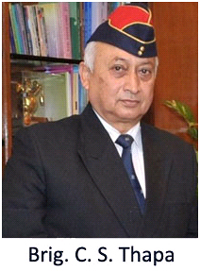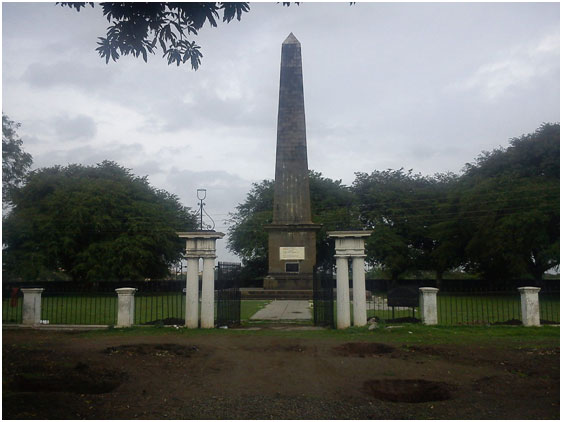 In the past week yours truly has crossed KoregaonBhima on four occasions and as one drove through the rustic Panchayat village each time it was a different experience. On the first day while going one watched the pandal coming up, while returning the same day we saw more hectic preparations for the rally scheduled two days later.
In the past week yours truly has crossed KoregaonBhima on four occasions and as one drove through the rustic Panchayat village each time it was a different experience. On the first day while going one watched the pandal coming up, while returning the same day we saw more hectic preparations for the rally scheduled two days later.
The day after the rally we saw burnt out buses and cars, while burnt out motor cycles were lying a dime a dozen. The air was tense as we drove through the war memorial and built up area with heavy police deployed all over, there was tension in the air. Next morning we read in the papers that the Ahmednagar- Pune highway was blocked shortly thereafter, for an hour plus. While returning a day after the bandh it was back to business as usual but signs of destruction were visible -- a burnt out fireengine, some burnt out buses still remained, but the area was peaceful, all lives lost, property destroyed, huge losses but what for?Did any one gain, or was it all in vain?
Captain Staunton with around 500 soldiers 300 cavalry and two guns was on his way to reinforce Kirkee from Sirur and after a forced march saw the Peshwas Army camped on the Koregaon high ground. A short sharp bloody battle was fought. The details of the battle are not the topic of discussion. Of the troops that took part along with Captain Staunton the 1st Bombay Native Infantry later became 2nd Battalion 4th Grenadiers, and the Poona Auxiliary Horse later became the famous “Poona Horse”, and its troopers fought dismounted due to lack of space in the village.

The two units were given the Battle Honour of Koregaon (Corygaum), “since repugnant” and the British constructed a war memorial at Koregaon in the shape of an obelisk. The crest of the Mahar Regiment initially had the “Pillar of Koregaon”, which was replaced by a "Bayonet", in between two machine guns.
Mahars have proud martial tradition and were initially used as scouts for the Maratha forts and later composed one sixth of the Bombay Army. Mahars consist roughly 10% of the population of Maharashtra and the battalion has a chequered history first being raised in 1917 as 111 Battalion on account of manpower shortage during the First World War and later disbanded after the war in 1922 once manpower was not required. Later due to pressure from Dr B R Ambedkar in 1941 who was appointed in the defence advisory committee he ensured three battalions were raised, namely First, Second and Third respectively. A total of 10,000 Mahars took part in the Second World War.
On independence these were converted to machine gun battalions, with 52 detachments and bravely took part in 47-48 war. 2nd Mahar got delayed in converting coming from Quetta thus bravely took part in the 47-48 conflict, as a regular infantry battalion. Another three battalions were raised during the troubled period of 47-48, as border scouts namely 4th, 5th, and 6th and these carry the suffix Borders.
A word about Mahar Regiment class composition, it is one of the only regiments that has troops from all communities of India. In 1963 post the Chinese conflict Mahar Regiment were converted to infantry battalions due to expansion of the Indian Army. Today the Mahar Regiment has 21 infantry battalions’ three RR battalions and two TA battalions.
The genesis of the current problem lies in caste based politics. The 32% Maratha majority population feel they are being sidelined, same as the Patels in Gujarat. For the last five decades or so they enjoyed power, but with BJP currently selecting a Brahmin DevendraFadnavis as a CM, slight is being felt. The Marathas also being land owners, farm incomes have dipped, thus while others have risen while they have stayed put where they were, leading to disconnect.
Historically the Indian nation owes a lot to the Maharashtrians. The state of Maharashtra has had strong personalities NathuramGodse, AcharyaVinobaBhava and Gopal Krishna Gokhale, all Brahmins, but the land also produced Dr B R Ambedkar. With such a strong legacy the state should not be struggling with tensions. Maharashtra has been undergoing unrest since last year, with massive rallies; the agitations were on account of the misuse of the “Atrocities Act”. On the other hand for the Dalits it’s important to send a message that they matter politically. A perfect recipe for cast based politics.
The government of India declared a lot of battle honours as "repugnant", based on the recommendations of a high level committee, which the Army formed. The Indian Army has a proud history and has won battle honours all over the world. Its soldiers celebrate such battle honours as a morale booster basically to tell the serving troops that your sacrifices will not go in vain. Keeping the prevailing conditions in view a large number of battle honours were declared repugnant or unacceptable or incompatible as they were in the service of a foreign power. The battle honour of Koregaon written as (Corygaum) was awarded to “The Grenadiers”, and Poona Horse, a perusal shows it as "repugnant". The obelisk from the Mahar Regiment has been replaced by the Bayonet.
If the armed forces that have fought have willingly shed their “repugnant battle honours”, won in the service of a foreign power, because the government considers it subjugation of India in some cases, why is the issue now being highlighted except to create sub national identities. Should the people of India and the political class in particular not respect the same? The Hindu vote is in demand for all parties, what better way than an easy picking on caste based politics; development can as usual take the back seat.